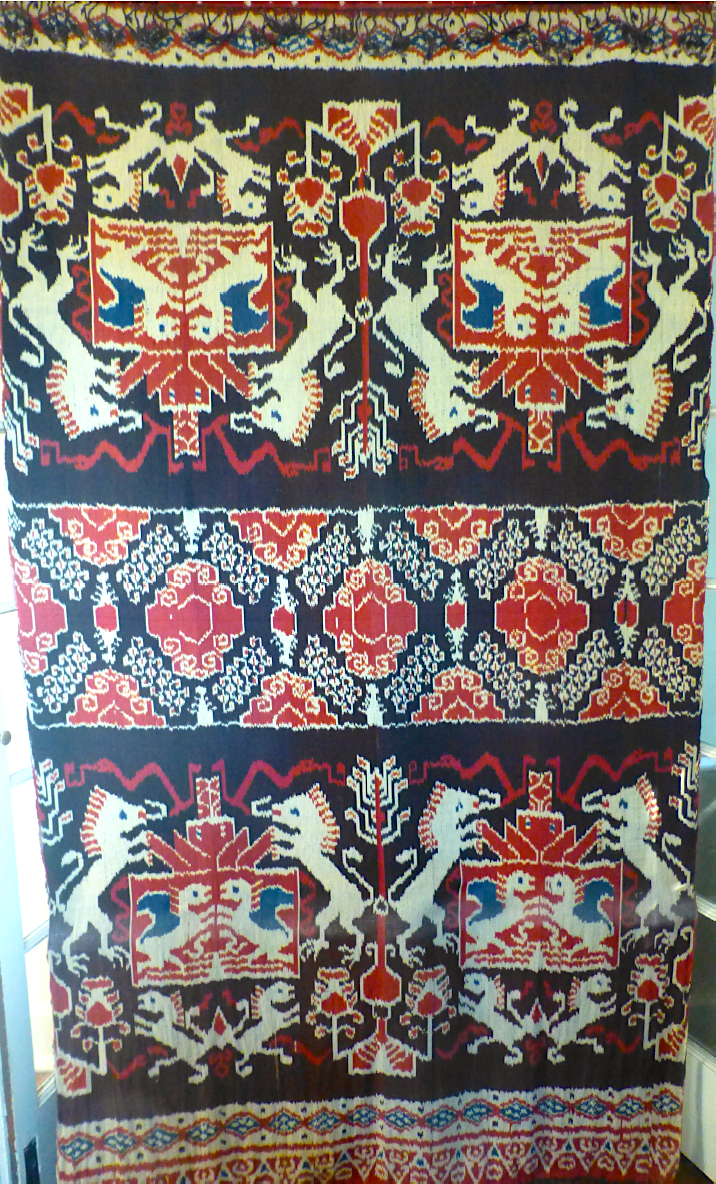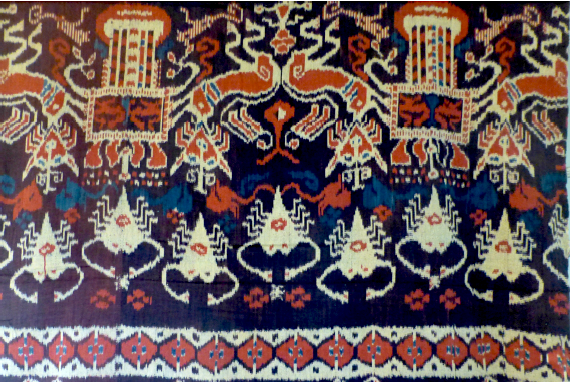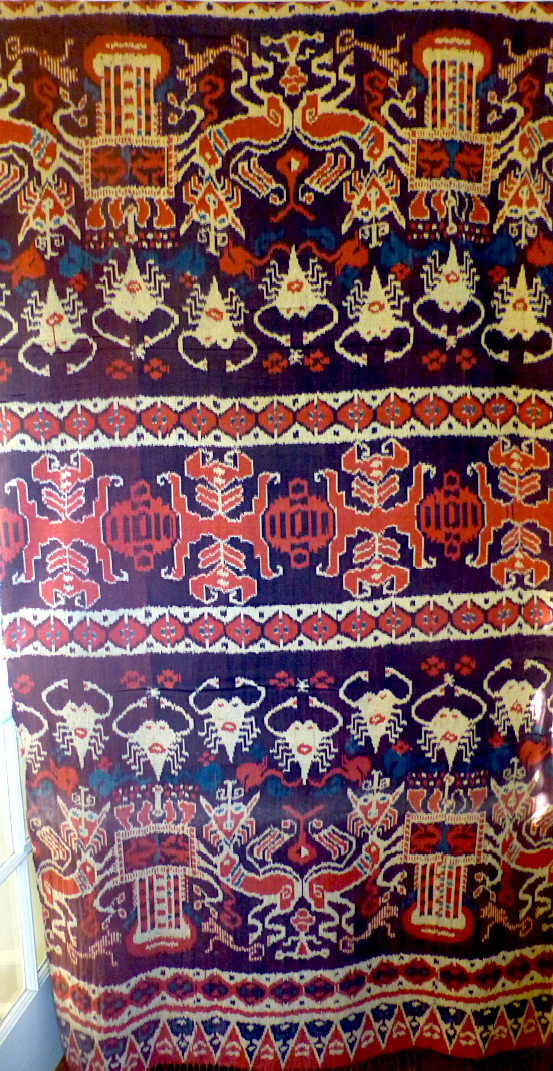East Sumba Ikat
Woven cotton, natural pigment dyes; 236 x 120cm. | Woven cotton, natural pigment dyes; 24 x 117.5cm.
The ikat cloths of Sumba represent one means by which the present generation passes on ritual and historical lessons to future generations. Like the pua kumbu of Borneo, the pieces are deeply personal, following distinct systematic form but also serving as a showcase for the individuality of the weaver and her village. Internationally, Sumba's textiles are collected as examples of virtuoso textile design, and today great numbers are still produced by a relatively small number of women, mainly on the eastern coastal districts of the island. These cloths are made not only for export out of Sumba, but also for trade for ritual use with peoples from the interior, where by custom the ikat process was forbidden.
Like puas, textiles are the products of Sumba women, and are understood as the tangible representations of the female element of the universe. Although different cloths are appropriate apparel for men and women, textiles are seen collectively as a female component of the cosmos. In ceremonial negotiations, cloth is a symbol of the woman's family, who are ritually superior on ceremonial occasions, and who provide textiles in exchange for "male" objects such as metal, buffalo, and ivory from the man's family. Textiles on Sumba are thus both clothing and the currency of ritual exchange: many fine folded cloths must be presented at each marriage as part of a counter-payment for a bride price paid in horses, buffalo, and gold, and at each funeral as a sign of mourning and later also a counterpayment for animals contributed to the slaughter of animals for the funerary feasts.
The ikat patterns can be geometric or of human and animal figures. East Sumba ikat cloths are characterized by striking figures of horses, deer, lions, birds, fish, skull trees, stars and other motifs. Stars symbolize descent from a celestial deity, while sea animals such as shrimp, lobster, and crabs represent the local coastal environment. Typical of East Sumba weaving is the skull tree motif. The Sumbanese were once head takers of prowess, and those villages that fielded war expeditions kept a “skull tree” in the village center on which were hung the heads of the enemy victims. Horses are a more prominent feature in Sumbanese ikat, being symbolic of heroism, and possessing great economic and ritual value. As among the Iban, certain designs were restricted both to master weavers and to aristocratic wearers, particularly the patola raty pattern, taken from the Indian patola trading cloths that were formerly much-prized among elite Sumbanese.
Nelson South East Asia Collection © 2025


